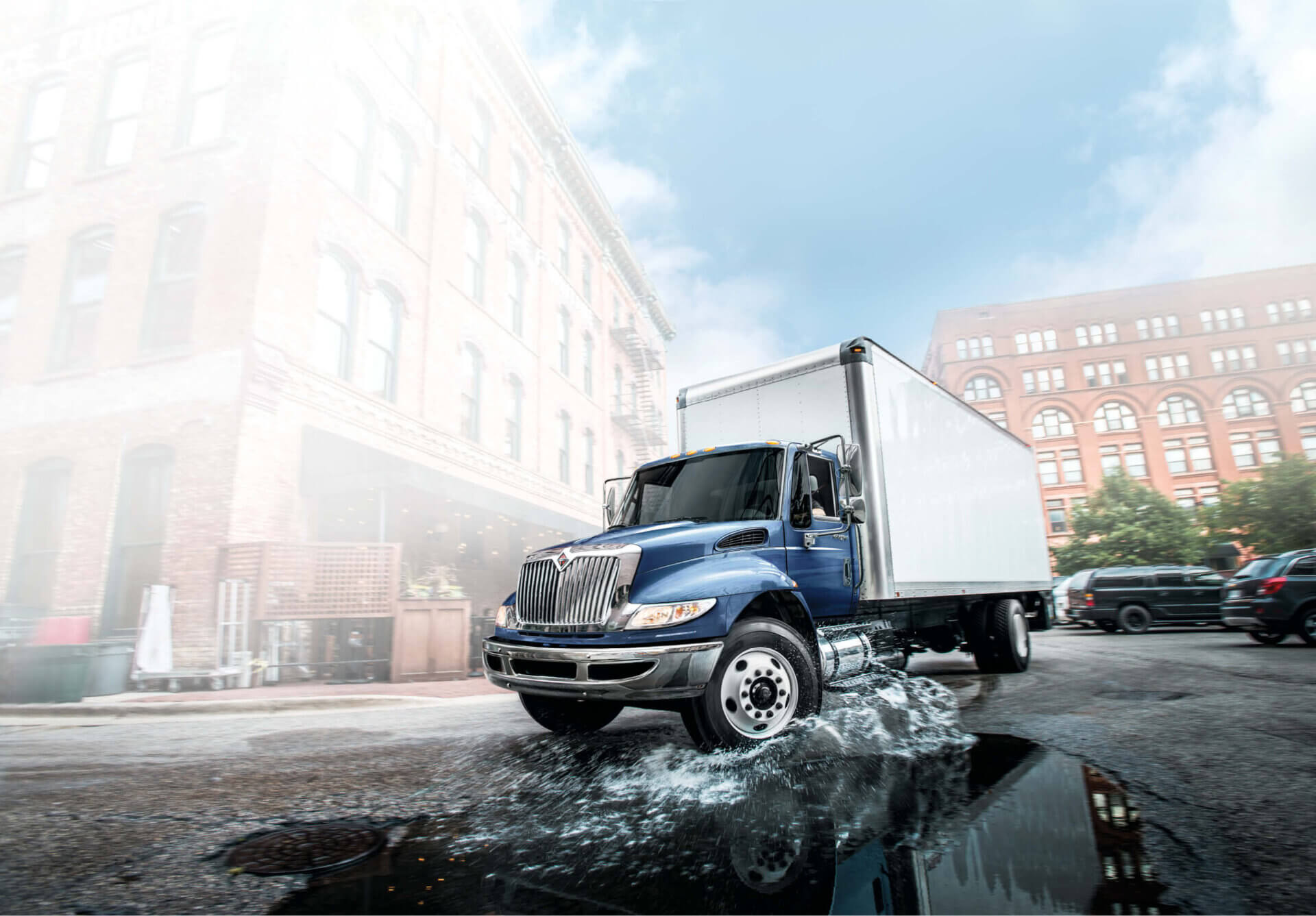Box Truck Maintenance Costs: What Should You Pay for Maintenance?
If you’re expanding your commercial vehicle fleet or choosing the first vehicles for a new trucking company, you may consider box trucks as an option. These highly flexible vehicles are effective in many roles, but there are costs you should consider.
This guide will help you understand what goes into box truck maintenance. You’ll find out how to measure the costs, what kind of costs are involved, and what steps you can take to keep your trucks profitable.
How Do You Measure The Cost of Box Trucks Ownership?
Measuring the cost of owning and operating a box truck is a fundamental aspect of managing a trucking business. One invaluable tool for understanding these operational costs is the CPM, or cost-per-mile measurement. It’s a yardstick that enables you to gauge the financial health of your truck fleet, making informed decisions about maintenance, efficiency, and profitability.
What Is CPM, and How Does It Apply To Box Trucks?
Cost-per-mile (CPM) is a metric that helps you break down the total costs associated with operating a box truck on a per-mile basis. This means that for every mile your box truck travels, you can calculate the exact cost incurred in maintaining and running that mile.
Now, let’s break down the key components that make up CPM:
1. Purchase Payments:
These monthly payments are a significant part of your box truck’s overall cost per mile (CPM), especially if you’ve financed your vehicle. Each truck payment comprises both the principal amount, which reduces your debt, and the interest, which compensates the lender.
To calculate your purchase payment CPM, divide your monthly payment by the average number of miles your new truck covers. For instance, if your monthly payment is $800, and your truck typically covers 8,000 miles a month, your purchase payment CPM would be $0.10 per mile.
2. Insurance:
Insurance is your safety net, the shield protecting your investment from life’s unexpected curveballs. It’s not just one cost; it’s a blend of expenses. For instance, consider your liability insurance – it kicks in to cover damages to others. Then there’s cargo insurance, safeguarding the goods you haul, and physical damage insurance, stepping in when your truck needs repairs or even a replacement.
Calculating the insurance CPM involves dividing your total annual insurance cost by the projected mileage for the year. To put it in perspective, say your total annual insurance costs sum up to $5,000, and you’re projecting your truck to cruise 50,000 miles in a year.
Crunch the numbers, and your insurance CPM rings in at $0.10 per mile. That’s what it costs to keep your business safeguarded, mile by mile.
3. Permits:
Operating a box truck legally requires multiple permits, including registration and licenses. These permits ensure that your business complies with legal and safety regulations. To include permit costs in your CPM, simply divide the total annual permit expenses by the expected mileage for the year.
If your total annual permit truck costs tally up to $2,000, and you’re expecting your truck to roll through 20,000 miles in a year, your permit CPM comes to $0.10 per mile. This yields a per-mile permit cost that can help you understand how this vital compliance factor influences your expenses.
4. Repair & Maintenance:
The more miles your box truck covers, the more maintenance it demands, as well as labor costs, impacting your CPM. Regular maintenance helps prevent costly breakdowns and extends the truck’s lifespan. To gauge your repair and maintenance CPM, divide your annual expenses in this category by the projected annual mileage. Each mile you travel will cost you this amount to keep your truck in tip-top shape.
5. Fuel:
Fuel is a major variable expense, and accurately assessing its CPM is critical. As fuel prices increase, your fleet’s expenditures can also go up. It’s not just the average cost of fuel itself but also any additives, like Diesel Exhaust Fluid (DEF), that your box truck requires for its operation. To calculate the fuel CPM, divide the annual fuel costs by the anticipated annual mileage.
Say you’re spending $12,000 a year on fuel and expect your commercial truck to conquer 120,000 miles in that time frame. Crunch the numbers, and your fuel CPM comes out to $0.10 per mile. That’s what you’re shelling out for every mile your truck travels in fuel costs, helping you manage your fuel budget efficiently.
What Kind of Maintenance Do Box Trucks Need?
Box trucks, often the unsung heroes in the trucking industry, are the backbone of countless businesses. So, let’s get into the nitty-gritty of common box truck maintenance routines. We’ll break them down and even throw in some ballpark figures for what you might expect in terms of costs.
Basic Service
Think of basic service as a box truck’s version of a check-up with your doctor. It’s all about making sure everything is running smoothly. During this routine, your truck gets an oil change, fresh filters, and a general check-up. This routine is essential for catching minor issues before they become major headaches. The cost? Most owner-operators are usually looking at around $650 to $750, but, of course, that can vary depending on where you get the service done.
DOT Inspections
Department of Transportation (DOT) inspections are non-negotiable for box truck owners. These inspections ensure that your vehicle complies with safety regulations. An annual DOT inspection, on average, can cost you around $80 to $200, depending on your location and the service provider. It’s a small price to pay for peace of mind and compliance.
Oil Changes
The lifeblood of your engine, regular oil changes are a must. They help prevent wear and tear, keep the engine running smoothly, and boost fuel efficiency. Oil changes for box trucks usually cost between $200 and $300, depending on the oil type and location.
Tire Replacement
Tires take a beating on the road, and replacing them is a necessary expense. The cost of tire replacement can vary widely, with a single tire setting you back anywhere from $250 to $600, or more, depending on the brand and type of tire.
Engine Repair or Rebuilds
Sometimes, the engine needs more than just routine maintenance. Engine repairs or even rebuilds can be significant expenses. The cost varies greatly based on the extent of the repairs needed. For minor repairs, you might spend a few hundred dollars, but for a full engine rebuild, you could be looking at several thousand dollars.
Computer Diagnostics
Modern box trucks are equipped with sophisticated onboard computer systems to monitor performance and detect issues. Computer diagnostics help pinpoint problems quickly, but the cost can vary. A diagnostic test generally ranges from $100 to $300.
Roll-up Door Repair
The roll-up door is a critical component of a box truck, and when it malfunctions, it can disrupt your operations. The repair cost of a roll-up door depends on the extent of the damage and the type of door, but it can range from $200 to $1,000 or more.
Brake Inspection and Maintenance
Brakes are essential for safety, and regular inspections and maintenance are crucial. The cost of brake maintenance typically falls in the range of $150 to $300, but it can be higher if significant repairs or replacements are needed.
Transmission Service
Regular transmission service is vital to keeping your trucker running smoothly. This service can cost anywhere from $100 to $300, depending on the complexity of the transmission system and the type of fluid used.
Cooling System Maintenance
Maintaining the cooling system is essential for preventing engine overheating. This routine service usually costs around $100 to $200, which covers coolant replacement and inspection.
How Can I Save on Box Truck Maintenance?
- Regular Maintenance Schedule
Following a consistent maintenance schedule can help you catch small issues before they become costly problems. Schedule oil changes, filter replacements, and general inspections to ensure your truck runs smoothly and avoid downtime.
- Driver Training
Invest in driver training programs to educate your team on safe and efficient driving practices. Smooth, controlled driving reduces wear and tear on your truck, ultimately lowering maintenance costs. Fewer hard stops and starts, less aggressive acceleration, and proper shifting can extend the life of your transmission, brakes, and other critical components.
- Choose Quality Parts
When it’s time to replace parts, opt for quality over cheap alternatives. High-quality parts may have a higher upfront cost, but they often last longer and perform better, reducing the frequency of replacements and maintenance.
- Tire Management
Proper tire management is a crucial factor in saving on maintenance costs. Regularly check tire pressure and alignment. Underinflated or misaligned tires can wear out quickly and decrease fuel efficiency. Rotating tires can also help distribute wear more evenly. Investing in good quality, long-lasting tires can further extend their lifespan and reduce replacement costs.
Consider enlisting the services of a fleet management company. These professionals specialize in maintaining and managing large numbers of vehicles, helping you streamline maintenance, track expenses, and schedule routine services efficiently. By leveraging their expertise, you can often negotiate discounts with service providers, further reducing maintenance costs.
- Technology Integration
Modern technology can be your ally in reducing maintenance and operating expenses. Implement telematics and fleet management systems to monitor vehicle health, track usage, and schedule maintenance proactively. These systems can alert you to potential issues before they become major problems, helping you address them at a lower cost.
How Many Miles Should a Box Truck Last?
The Average Lifespan:
The lifespan of a box truck can vary depending on several factors, including how well it’s maintained, its usage, and the quality of the vehicle. On average, a well-maintained box truck can last anywhere from 200,000 to 300,000 miles. With diligent care and attention, some box trucks have been known to reach even higher mileage, sometimes exceeding 500,000 miles or more.
Maintenance Matters:
The key to extending the life of a box truck is regular maintenance. Scheduled services, oil changes, inspections, and addressing minor issues promptly can significantly impact a truck’s longevity. Preventive maintenance is like giving your truck a fountain of youth, keeping it on the road and in excellent shape for years to come.
Quality of Build:
The brand and build quality of your box truck can influence its lifespan. Investing in a well-constructed, reputable truck can provide you with a more extended service life. These vehicles often come with better materials and engineering that can withstand the rigors of daily use.
Usage and Driving Conditions:
How a box truck is used and the conditions it faces can also impact its lifespan. A box truck used for long-haul transportation may accumulate miles faster than one used for local deliveries. Similarly, trucks that frequently navigate challenging terrain or harsh weather conditions may experience more wear and tear.
Driver Habits:
The habits of your truck drivers play a role in your truck’s lifespan. Careful, considerate driving can extend the life of your vehicle. Avoiding abrupt stops and starts, aggressive acceleration, and unnecessary idling can reduce wear and tear on critical components like the transmission, brakes, and engine.
Keep Your Fleet of Box Trucks Running
Making sure your fleet of box trucks stays on the road, remains reliable, and doesn’t break the bank is a top priority.
Throughout this guide, we’ve really dug into the details of box truck maintenance. We’ve covered the costs, looked at how long they can keep rolling, and dished out some practical tips to keep them in top shape.
At Kyrish Truck Center Group, we’re all about understanding the challenges and priorities that come with managing and maintaining a fleet of box trucks. Our team’s got the experience, and we’re all set with state-of-the-art services to help you keep your fleet moving.
Reach out to us today, and let’s figure out how our solutions can give your business a boost. Together, we’ll make sure your fleet keeps on serving your needs, reliably and efficiently.


